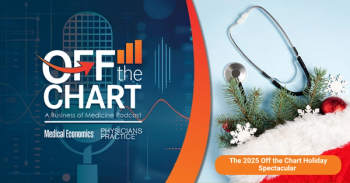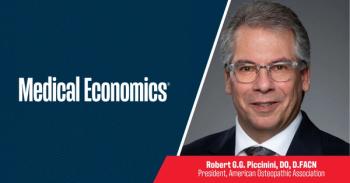
How will tariffs affect prescription drugs? Get ready for price increases
Key Takeaways
- Tariffs on imported medicines may increase U.S. prescription drug prices, affecting both branded and generic drugs.
- Pharmaceutical manufacturing has shifted overseas due to favorable tax policies, increasing reliance on imports.
Experts examine drug pricing policies and potential effects of new tariffs on imports.
Prescription drug prices likely will go up if the United States imposes
Since taking office, President Donald J. Trump and his administration have proposed new
“U.S. Drug Supply Chain, Tariffs, and the Impact on Prices and Availability” was a webinar hosted by the Johns Hopkins Bloomberg School of Public Health. Professors
Bring in the medicines
Branded pharmaceuticals — the drugs doctors and patients know by name — make up about 15% of U.S. prescriptions, but account for nearly 90% of drug spending, said Ballreich, an associate research professor in the Department of Health Policy and Management. Historically, the United States had a significant manufacturing footprint in states such as New Jersey, Pennsylvania and the Carolinas, he said.
In the last 20 years, much of the manufacturing has shifted overseas — but not like heavy production seeking cheap labor, such as auto makers opening plants in Mexico or China. Instead, drug makers have sought out favorable tax policies and have moved to high-income countries, with Switzerland, Ireland and Germany among the leaders, Ballreich said.
In the last 10 years, drug imports have more than doubled in worth, from $100 billion to more than $215 billion, he said, citing U.S. Customs data.
“So, we are now sourcing a lot of our branded drugs from overseas from high income countries because of tax policy,” Ballreich said.
Patients priced out
In the United States, consumers generally pay three to four times more for branded prescription drugs than patients in other developed countries. Pharmaceutical makers have the intellectual property rights that effectively create a monopoly on making some drugs, said Socal, an associate professor in the Department of Health Policy and Management.
“Unfortunately, that results in year after year after year, about one in four Americans reporting not having been able to afford the drug that they needed due to cost,” she said. “Patients have to skip doses or take a lower dose than prescribedor simply not fill a prescription altogether because they could not afford it. And of course, that has significant clinical implications for the U.S population.
“So, in the event of a tariff that has not yet been implemented for pharmaceuticals, but has been over and over proposed by the administration if tariffs were applied to prescription drugs, one of the most immediate consequences could be price increases on prices that we are already paying way in excess of other countries,” Socal said.
What about generics?
In the United States, medicines for managing chronic conditions, antibiotics, or painkillers typically are generic drugs that make up more than 90% of prescriptions dispensed every day, Socal said. They are cheaper than branded drugs and Americans generally pay the same prices as people in other countries, and maybe slightly lower prices.
“And for these products, the biggest problem is not cost, but it's actually supply shortages,” she said. “You know, shortages of generic products, um, are an ongoing problem in the United States. It affects virtually all medical specialties. Hospitals every day report having trouble taking care of patients because there is a shortage of some drug that they need.”
Tariffs could exacerbate shortages because those generic drugs have lower profit margins for pharmaceutical makers, so the drugs often made in China or India. In those countries, production costs are low; tariffs could drive up prices, but more likely are manufacturing problems, potential contamination and inspections that can slow down manufacturing processes and make shortages worse, Socal said.
Watching for trends
While no one knows exactly what will happen when or if the United States imposes tariffs on imports, the professors answered questions from news media and pointed to some trends and indicators.
Surging imports
Generally, drug prices have not changed much, if at all, due to the potential for tariffs, Ballreich said. However, branded pharmaceutical imports are surging right now as Big Pharma tries to get as much product into the United States as they can ahead of any tariffs. For perspective, imports from Ireland in March 2025 were five times more than the same month a year ago, Ballreich said.
Making more at home?
As for making more drugs in the United States, manufacturing medicine is complex and realistically it could take several years for a major pharma company to build a new domestic plant from scratch, Ballreich said.
“That said, there are potential some areas where there is still some manufacturing in the U.S. that could potentially expand, add additional lines to manufacturing,” he said. “The short answer is, I don't think we're going to see a significant surge in domestic or U.S manufacturing of branded pharmaceuticals in the near term that is within the next year or two.”
Prescriptions and prices
Prescribers may be insulated from drug prices, so prescriptions likely won’t change, Ballreich said. But there are downstream effects. Prices to consumers are determined largely by their health insurance plans, Socal said. If patients have fixed-price copays, they may not feel the change in price, but the insurance company will absorb the price increase and could increase premiums the next year, she said.
As a physician, Socal said she is well aware of physicians’ good intentions in trying to help patients access drugs as much as possible. But the United States generally has a lack of information about where drugs come from.
“We just don’t know, it’s just unavailable information, where each product is coming from,” she said. “And often when one product is in shortage, providers also don’t know which other products are available, where they are available … which pharmacies have inventory, and so on.”
For health care providers, the challenges in prescribing are getting access to the information about which drugs are affected, to what extent their prices may be changing, and to what extent inventories and their supply may be reduced, Socal said.
Effects on physicians
Even without tariffs, doctors already are prescribing medicines that patients sometimes cannot access due to cost or shortages, Socal said. Shortages happen more frequently with generic drugs, and in 2024, more than 300 drugs were in shortage, a record, she said.
There can be immediate clinical effects and longer term implications, she said, using the example of a chemotherapy drug shortage affecting the prognosis of an oncology patient. Supply generally is more stable for branded drugs because pharmaceutical makers want to keep their market share for those drugs. If a generic drug is in shortage, physicians may prescribe branded drugs that are more expensive to begin with, and may not be the best medicines for the patient, Socal said.
Medicare prices
The Inflation Reduction Act created the Medicare Prescription Drug Price Negotiation Program to bargain for better prices for the most widely used medicines for beneficiaries. If tariffs go into effect for branded pharmaceuticals, prices likely will increase to reflect those, Ballreich said. The tariffs would be passed through to the Medicare program, meaning patients likely would either pay higher prices at the pharmacy or pay higher prices for Medicare Part D premiums, he said.
Creating a stockpile
The United States has stockpiling practices for some drugs, generally focusing on medical countermeasures to respond to bioterrorism or other acute emergencies, Socal said.
There have been proposals to create incentives for hospitals to stockpile drugs that are in short supply, but then there are questions of what drugs should be stored and how much. Stockpiles could be a response to a lack of supply, but the better long-term solution is to create public policies incentives that resolve supply disruptions and shortages, she said.
Learning more
The webinar planners offered additional resources about potential tariffs on drug imports.
The U.S. Food and Drug Administration maintains its
Newsletter
Stay informed and empowered with Medical Economics enewsletter, delivering expert insights, financial strategies, practice management tips and technology trends — tailored for today’s physicians.








